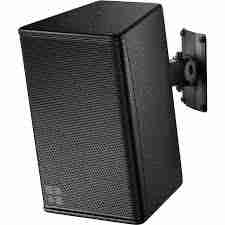The loudspeaker market has seen remarkable development in recent years, driven by increasing demand for wireless audio systems, smart speakers, and immersive sound experiences. The convergence of IoT, AI, and digital content consumption is pushing the boundaries of traditional speaker technology, transforming how audio products are designed, marketed, and consumed.

Evolution from Traditional to Smart Audio Systems
Historically, loudspeakers were largely used in stereo systems and public address equipment. However, the market has transitioned swiftly from analog systems to digital, wireless, and AI-enabled devices. Today’s consumers expect more than just high sound output—they demand intelligent, responsive, and aesthetically pleasing devices that integrate seamlessly into their digital lifestyles.
Smart speakers like Amazon Echo, Google Nest, and Apple HomePod have set new benchmarks, combining voice assistance, home automation, and superior audio fidelity. These developments represent a fundamental shift in how speakers are perceived—from passive sound devices to central smart home components.
Technological Innovations Powering Market Development
1. Wireless Connectivity:
Modern speakers increasingly leverage Bluetooth, Wi-Fi, and NFC for wireless functionality. This not only reduces clutter but also enhances portability and accessibility across devices.
2. Voice Assistant Integration:
Voice recognition and AI technologies have been major catalysts in speaker development. By embedding assistants like Alexa and Google Assistant, manufacturers add a layer of intelligence that boosts speaker functionality beyond audio playback.
3. Spatial and 360-Degree Sound:
The development of spatial sound and immersive audio formats (e.g., Dolby Atmos) has enhanced listener experience, particularly in home entertainment and gaming segments. Companies like Sonos and Bose are investing heavily in directional sound engineering.
4. Sustainable and Modular Design:
To meet the growing demand for sustainable electronics, manufacturers are developing modular speakers that can be repaired, upgraded, or recycled easily. This aligns with the global shift toward eco-conscious consumerism.
Consumer Behavior and Market Expansion
The development of the loudspeaker market is tightly aligned with shifting consumer lifestyles. Key behavior trends influencing market dynamics include:
On-the-Go Consumption: Portable speakers that cater to travel, fitness, and outdoor use are growing in popularity. Lightweight, durable models with long battery life are in demand.
Home Entertainment Boom: With increased streaming content and home cinema setups, soundbars and subwoofer systems have become essential for many households.
Multi-Room Audio Solutions: Consumers are adopting multi-room setups that allow synchronized playback across different zones of a house. This requires advanced connectivity and easy-to-use control interfaces.
Aesthetic Preferences: Beyond sound quality, consumers value sleek, stylish speaker designs that complement interior décor.
This evolving set of expectations is pushing companies to invest in product differentiation, software updates, and user-friendly interfaces.
Regional Development Patterns
North America and Europe are leading markets in terms of technological adoption and premium product sales. Consumers in these regions are drawn to high-end audio experiences and smart functionalities. Manufacturers here focus on brand value, aesthetics, and environmental compliance.
Asia-Pacific, particularly countries like China, India, and South Korea, is witnessing explosive growth due to rapid urbanization, smartphone penetration, and rising disposable incomes. Local manufacturers are thriving by offering affordable yet feature-rich products.
Latin America and the Middle East & Africa are emerging as untapped markets. Increasing digital infrastructure and rising consumer awareness are enabling greater penetration of both entry-level and mid-range speaker systems.
Strategic Business Development and Partnerships
Manufacturers are expanding development capabilities through:
R&D Investments: Focused on improving battery life, sound clarity, and AI algorithms for enhanced personalization.
Collaborations with Tech Giants: Partnerships with companies like Google and Amazon help audio brands embed smart features in their devices.
Direct-to-Consumer (DTC) Models: Online platforms enable brands to interact directly with customers, receive feedback, and offer customized solutions.
Brand Licensing and OEM: Popular brands are expanding their portfolios through strategic licensing and partnerships with OEMs to broaden their reach.
Challenges in Development and Future Considerations
While the loudspeaker market is growing, development is not without challenges:
High Competition and Price Wars: The presence of many brands creates margin pressures and rapid product cycles.
Supply Chain Volatility: Component shortages, especially chips, can delay production timelines.
Compatibility Issues: Ensuring smooth interoperability between devices and platforms is crucial to consumer satisfaction.
E-Waste Management: With faster product obsolescence, environmental sustainability remains a concern.
Moving forward, companies must integrate eco-friendly practices, enhance software ecosystems, and ensure customer-centric design to remain competitive.
Conclusion
The development of the loudspeaker market is being shaped by a blend of advanced technology, changing consumer expectations, and global market dynamics. As sound systems become more intelligent, connected, and personalized, the industry is poised for long-term evolution. With continued innovation and strategic alignment with user needs, stakeholders can expect robust growth in this increasingly dynamic market.




